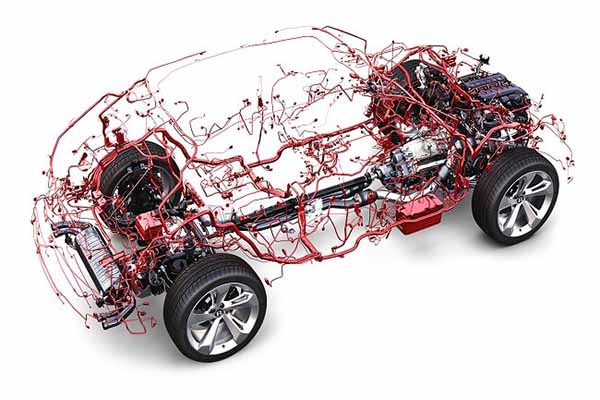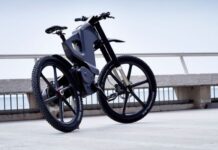The global automotive wiring harness market is garnering significant traction due to advancing vehicle technologies. Besides, wide-scale infrastructural development worldwide in terms of luxury car manufacturing capabilities contributes to the market growth. Also, growing complexities related to onboard electronics plays a causal role in driving the market demand for the in-vehicle wiring harness.
The governments offer monetary benefits and subsidies to boost the development of the required infrastructure. The proliferation of electric vehicles helps the market reach the expected market valuation. Citing the increase in HEVs’ development and production scale, MRFR expects the global automotive wiring harness market to expand at a 4.30% CAGR during the assessment period (2022-2030).
Advances in Automotive Electronics Requires More Complex Wire Harnesses
Automobiles today have a number of electronic systems to ensure safety and basic functions as well as comfort and convenience. These systems are interconnected with several data circuits and bundled wires functioning as the controlling center of a vehicle. These electronics need control signals running on electrical power supplied from the battery to operate. OEM use wire harnesses to fully automate battery-pack assembly.
A high voltage power distribution system and wire harness is the medium for transmitting these signals and electric supply. In-vehicle network system and high voltage power distribution system are two major aspects of a vehicle. The transmission system of wire harnesses is arranged into four network systems, all of which are connected to a vehicle network gateway to exchange information with each other.
Producing high voltage power distribution systems, including various automotive components & systems and charging devices, require external power sources that can improve the performance, reliability, and convenience of hybrid and electric vehicles. Simple connections wiring harnesses make removing battery modules easier and quicker than a wired battery.
Read more: https://www.marketresearchfuture.com/reports/automotive-wiring-harness-market-2408
Key Industry Trends
The global automobile industry is undergoing unprecedented change due to the advent of technology-laden vehicles enabling connected, electric vehicles, and autonomous driving. A number of ECUs and sensing devices are added to vehicles to fully implement these technologies.
This makes it important to rethink vehicle architecture to reduce the size and weight of the wiring harness. While early initiatives are already taking place, new approaches are rapidly catching momentum as the preferred approach due to their capacity, flexibility, and ability to constrain costs. Wires increase development efforts, manufacturing costs, and weight while reducing mechanical reliability and usable space.
However, the complexity of a battery wiring harness also makes assembling a battery pack difficult and expensive. Wired packs should be assembled, and the connections terminated manually, which is a costly and hazardous process as high-voltage EV battery modules are supplied with electricity. To maintain the assembly process safety and protect production-line workers, rigorous safety protocols are applied.
APAC Leads Automotive Wiring Harness Market Globally
The Asia Pacific region witnessed vast demand for wiring harnesses mainly due to the rapidly growing automotive sector. Besides, the growing awareness of passenger and vehicle safety creates greater market demand. Luxury car brands such as Rolls Royce, Ferrari, and Maserati, have established their production units in India and China, impacting the market growth positively.
The advent of special technological features, such as key-less entry or handprint unlocking, in-built GPS, automatic gear shifting, and stolen vehicle tracking & alarms, combined with the growing demand for luxury vehicles, boosts the market in this region. Moreover, the rapid economic growth escalates the market value, increasing per capita income and improving the lifestyle of people residing in various developing countries in this region.
South Korea and Japan are technologically advanced markets for vehicles; China and India are rapidly developing countries in this region. Moreover, the growing demand for passenger cars due to changing lifestyles boosts the market demand.
Industry Players’ Strategies to Follow
Highly competitive, the automotive wire harness market appears fragmented with several well-established players. Wire harness manufacturers strive to design cost-effective techniques for rapidly and accurately assembling wire connections. They develop new, innovative technologies and efficient design principles to design, develop, and manufacture wire harnesses required in the automotive industry.
Substantial R&D investments are made in developing a completely different technology than their competition. To gain a larger competitive share, industry players incorporates strategic initiatives such as mergers & acquisitions, collaboration, expansion, and product/technology launches. They use research and engineering know-how to develop innovative and affordable solutions to streamline the entire product development process, from concept to prototype to manufacturing and delivery.
Notable Industry Updates
On May 23, 2022, Marelli, a leading global automotive supplier, announced the expansion of its range of battery management technologies, launching an advanced wireless distributed battery management system (wBMS) for electric vehicles. The new system reduces wiring harness by 90%, allowing for more flexibility in harness, efficiency, reliability, and reduced costs in electric vehicles.
This further eliminates the wired physical connections typically needed in other BMS architectures that allow greater flexibility, efficiency, improved reliability, and reduced costs, all crucial aspects of electric vehicles. Marelli will make this solution available from Q2 2022 to support customer launches in 2024.

















